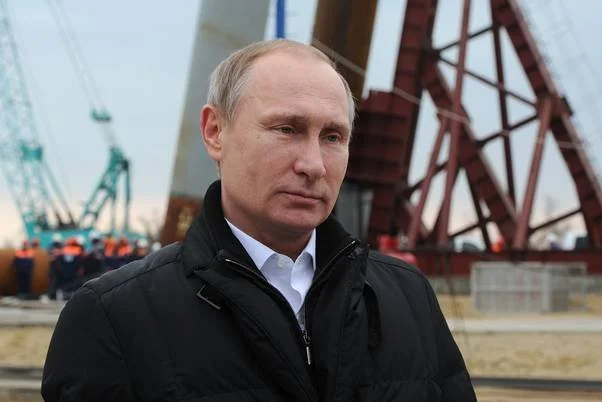The Russian Oil Ban Will Fail. Here’s Why That Matters.
❮ VSG News
OPINION
Between Sanctions & Reality: Why Energy Trade Still Finds Its Paths — and What Deal-Makers Should See.
★ Article by Arno Saffran, Saturday 20 August, 2025Brussels and Washington are betting big on the idea that Russian oil can be banned outright from the West by 2027. The narrative is clean: choke off Moscow’s revenue, accelerate the war’s end, and show that the energy transition has teeth.
Late last year, European leaders stood before cameras and declared an historic break with Russian oil. The ban on seaborne crude was heralded as a moral and strategic severing — a sign that Moscow’s largest revenue stream would no longer flow through European ports. The United States matched its own ban with rhetoric just as forceful. The West, we were told, was drawing a clean line.
But energy never moves in straight lines.
Look closely at the map, and you’ll see Russian crude still finding its way to market. It travels through pipelines whose valves were never shut, aboard tankers with shadowy ownership, into refineries that quietly blend and re-export it under different flags. It sails east to China and India at a discount, then sometimes west again as refined products. The global oil market, ever pragmatic, continues its work — meeting demand, balancing flows, keeping the lights on.
This is not a political statement. It is simply the business reality that any strategist, trader, or deal-maker must grapple with.
The Persistence of Flow
Consider Hungary and Slovakia, which continue to receive Russian crude through the Druzhba pipeline, protected by exemptions. Or Turkey, which has become one of the largest buyers of Russian oil products and a logistics hub for re-exports. China and India now account for most of Russia’s seaborne crude sales — snapping up barrels at cut rates, often shipping them thousands of miles before re-entering global markets.
Even in the European Union, Russian LNG still arrives at terminals, a reminder that for all the rhetoric, energy systems cannot pivot overnight. The infrastructure is sticky: pipelines are sunk costs, refineries are calibrated for particular grades of crude, and switching suppliers takes years and billions.
Sanctions are meant to hurt — and they do, to an extent. But they also create price dislocations, arbitrage opportunities, and a thriving market for those willing to navigate the legal gray zones. The so-called “shadow fleet” of tankers — often old, often uninsured by Western firms — carries millions of barrels each day.
Policy vs. Practice
Sanctions are powerful symbols. They express a collective moral position. But symbols cannot rewrite logistics networks overnight.
The policymaker’s job is to cut off the Kremlin’s cash flow. The deal-maker’s job is to keep the molecules moving. And those jobs are in tension. For every new tranche of sanctions, there is a fresh workaround. For every enforcement action, a new shell company. This is not cynicism — it is simply how global trade works.
As someone who has spent years placing business leaders into oilfield services and advising on market entry, I see this as a cautionary tale. Not about the futility of sanctions, but about the gap between policy intent and market execution.
Opportunity — and Its Price
In this murky environment, opportunity and risk come as a pair.
There are fortunes to be made in understanding which refineries can handle which crudes, which countries have legal exemptions, and where the next bottlenecks will form. There is also real reputational risk: regulators are increasingly aggressive, and association with sanction-dodging can tarnish companies — and careers.
The strategist’s task is not to take a side, but to map the terrain. Who is still buying? Where does the infrastructure point? What happens if exemptions close? And what comes next, as Europe seeks to diversify toward LNG, U.S. exports, and eventually hydrogen and renewables?
The Five-Year Horizon
Sanctions will likely tighten. Pipeline exemptions may expire. Shadow fleets will face rising insurance and financing costs. Yet Russian energy will not disappear from the market. It will simply take longer, more circuitous routes.
For the deal-maker, this is both a challenge and an invitation. Those who remain politically neutral, who can read both policy and market signals, and who build compliance firewalls robust enough to withstand tomorrow’s regulations, will occupy a rare position: trusted brokers in an increasingly fragmented energy world.
The goal is not to cheer or condemn the sanctions regime, but to understand it — and to act with clear eyes. In a market defined by imperfect bans and persistent demand, the most valuable skill is the ability to see where the flows will go next.
References
Centre for Research on Energy and Clean Air (CREA), “August 2025 — Monthly Analysis of Russian Fossil Fuel Exports and Sanctions, 10 September 2025: data showing that China dominates crude oil purchases from Russia, Turkey dominates oil products purchases, and the EU remains a large buyer of LNG and pipeline gas. CREA
Reuters, “After Trump pressure, EU aims to bring forward Russian LNG imports ban to Jan. 1, 2027; package also targets ‘shadow fleet’ and crypto”, 19 September 2025: describing the proposed EU 19th package of sanctions, including bans on Russian LNG, targeting of shadow fleet tankers, and action against oil traders and refineries in third countries. Reuters
How relevant and useful is this article for you?
★ ★ ★ ★ ☆ 102
ABOUT THE AUTHOR(S)
— Arno Saffran
Arno developed his approach through roles in client development (KPMG) and strategic commercial engagement (affiliated with advisories including Hakluyt), focusing on complex industrial and energy sectors.
VSG works across the extractive value chain, positioning people who form the critical bridge to early-stage relationships and commercial access in complex markets.
